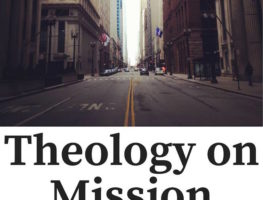In keeping with the new format of www.missioalliance.org, we are adding a second post every week. This week’s “second post” is this one by Matt Tebbe, a former pastor at Life on the Vine and now pastor at River Valley in Mishawaka. Read about him here. Join in the conversation with Matt won’t you? My regular post is coming Wednesday afternoon this week.
——————————–
Watch the video below from an awards show in October, 2011.
The demonstration of love here: first from Mel Gibson to Robert Downey Jr. (love that lays down a ‘life’ – i.e. reputation and status and cred – for a friend) and then from Downey to Gibson is remarkable. There is a curious phrase that Gibson and Downey use about dealing with our brokenness, one that I wasn’t familiar with until I watched this video: “hugging my cactus” – embracing the ugly parts of myself and my sin. I believe this practice of “hugging the cactus” enables the missional posture of love and proclamation – not only for Downey and Gibson, but for all who call on the name of the Lord Jesus Christ.
My suggestion – and what I believe the video illustrates – Without the practice of learning to hug our cactus (or “befriending our brokenness and putting it under a blessing” as Henri Nouwen writes in Life of the Beloved) we are unable to assume a posture necessary to sustain prophetic proclamation and mission in our post-christian culture.
Let me say a bit about what I think this “hugging my cactus” isn’t. It isn’t condoning or being soft on sin. It’s not adopting a victim mentality that holds out my brokenness as someone else’s fault or as an excuse for my poor choices. Hugging my cactus isn’t doing penance – i.e. “this brokenness/sin I struggle with is just my thorn in the flesh, my cross to carry as I follow Jesus”. It’s not a form of asceticism, wherein I increase my holiness and fervency with God by feeling the pain of the cactus needles as though brokenness is the whole point of the Christian life. (thanks Seth Richardson for that insight). This is not what I mean when I use the phrase “hug my cactus” or “befriend my brokenness”.
Rather this hugging our cactus – befriending our brokenness and putting it under the blessing – is how we learn to treat ourselves in our sin the way Jesus does. It is how we demolish strongholds and take captive thoughts to obey Christ (2 Cor 10.4, 5). To hug my cactus is to develop a compassionate curiosity towards my deepest sin and brokenness which opens me up to the transforming grace and love of Jesus Christ. This is a practice of surrendering to the gospel right where most desperately need to be saved. Not in mental abstractions or safe ideals but right in our shame, our guilt, our condemnation.
I suggest it is the moralist in us that believes we should treat ourselves harshly. Treating ourselves harshly when we sin keeps us firmly in control, managing not only our sin but the consequences as well. For all our emphasis on the atonement we often do a poor job of actually living in light of it: That his posture towards us isn’t punishment or condemnation but mercy. And our response to this mercy isn’t to treat ourselves mercilessly; rather, to begin – right in the wrongness, at the dead center of our wickedness – to treat ourselves as Jesus would. In Jesus Christ God isn’t chronically disappointed with me, he’s not afraid to face my sin, he’s not whistling past my graveyard: he’s waiting for me in the depths of my life to redeem, save, heal, and restore. Hugging my cactus – befriending my brokenness – is the posture in which I can repent of my self-help, sin-management schemes and open myself up the Lord who defeated my sin and waits patiently to love me there.
This practice of compassionate curiosity is learning to treat myself the way Jesus treats me in my sin. I’m suggesting this is key to experiencing the liberating resurrection life Jesus promised us. How I treat myself in my sin reveals:
1. What I think God is like. Rather than beating our brokenness into submission with guilt and shame we learn to befriend our brokenness and submit it to the love and power of God. Rather than ignoring or denying our brokenness out of fear, we learn to trust the perfect love that casts out fear. Rather than hiding and pretending, we walk in the light, in wisdom, making the best use of our time because the one who searches and knows all things has already declared freed and forgiven over my darkest transgression.
2. What I think others deserve. When others confess sin to me – or when I experience conviction of sin for them (the spiritual gift of every Christian 🙂 ) – how do I naturally respond? If I live in a shame-based religion that hasn’t tapped into the compassion and forgiveness of the cross when others sin I find myself offended, irritated, churning and stewing inwardly about how wrong they are. “How do I fix this? How do I set them straight?” I rehearse their wrongdoing and my virtue in increasingly creative and pious-sounding ways (does any of this sound familiar?). If I live in a grace-based relationship with Jesus where I am learning to treat myself with compassion and curiosity I find a deep spaciousness for love welling up inside. For a beautiful and wise example of this compassionate curiosity towards another in sin, click here.
This practice of compassionate curiosity – learning to treat myself the way Jesus treats me in my sin – not only reveals how we experience God and others but it is also fundamental to developing a missional posture of prophetic proclamation and mission in our world:
- We stand with – not for/against – the sinner. In the church, outside the church – embodying the reality that at the foot of the cross there are no “us vs. them’s” but we are all them’s.
- Our authority is out of our experience of relationship and transformation – no technique, degree, office, title, positional power will do. We speak from how our own stories and God’s story intertwine .
- Shame is no longer used as leverage to convert to Christ; rather testimony of love and healing IN our shame is. We leave the “How dare you’s” and “Shame on you’s” for those pitching a different trust than Jesus.
- Proclamation is not “over/against” but “under/with” – Whatever favor, whatever clout, whatever honor we have we employ it as one who stands with others suffering, with them in their suffering. Reputation, status, etc are not manicured and managed to impress but are employed to seek and save.
I’m struck by how Downey and Gibson model both a practice and a posture that is crucial for the Church in the 21st Century. But I confess I may be reading too much (or not enough) into this. Where do you resonate with what I’m suggesting? Where would you question?








Missio Alliance Comment Policy
The Missio Alliance Writing Collectives exist as a ministry of writing to resource theological practitioners for mission. From our Leading Voices to our regular Writing Team and those invited to publish with us as Community Voices, we are creating a space for thoughtful engagement of critical issues and questions facing the North American Church in God’s mission. This sort of thoughtful engagement is something that we seek to engender not only in our publishing, but in conversations that unfold as a result in the comment section of our articles.
Unfortunately, because of the relational distance introduced by online communication, “thoughtful engagement” and “comment sections” seldom go hand in hand. At the same time, censorship of comments by those who disagree with points made by authors, whose anger or limited perspective taints their words, or who simply feel the need to express their own opinion on a topic without any meaningful engagement with the article or comment in question can mask an important window into the true state of Christian discourse. As such, Missio Alliance sets forth the following suggestions for those who wish to engage in conversation around our writing:
1. Seek to understand the author’s intent.
If you disagree with something the an author said, consider framing your response as, “I hear you as saying _________. Am I understanding you correctly? If so, here’s why I disagree. _____________.
2. Seek to make your own voice heard.
We deeply desire and value the voice and perspective of our readers. However you may react to an article we publish or a fellow commenter, we encourage you to set forth that reaction is the most constructive way possible. Use your voice and perspective to move conversation forward rather than shut it down.
3. Share your story.
One of our favorite tenants is that “an enemy is someone whose story we haven’t heard.” Very often disagreements and rants are the result of people talking past rather than to one another. Everyone’s perspective is intimately bound up with their own stories – their contexts and experiences. We encourage you to couch your comments in whatever aspect of your own story might help others understand where you are coming from.
In view of those suggestions for shaping conversation on our site and in an effort to curate a hospitable space of open conversation, Missio Alliance may delete comments and/or ban users who show no regard for constructive engagement, especially those whose comments are easily construed as trolling, threatening, or abusive.